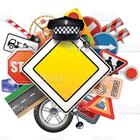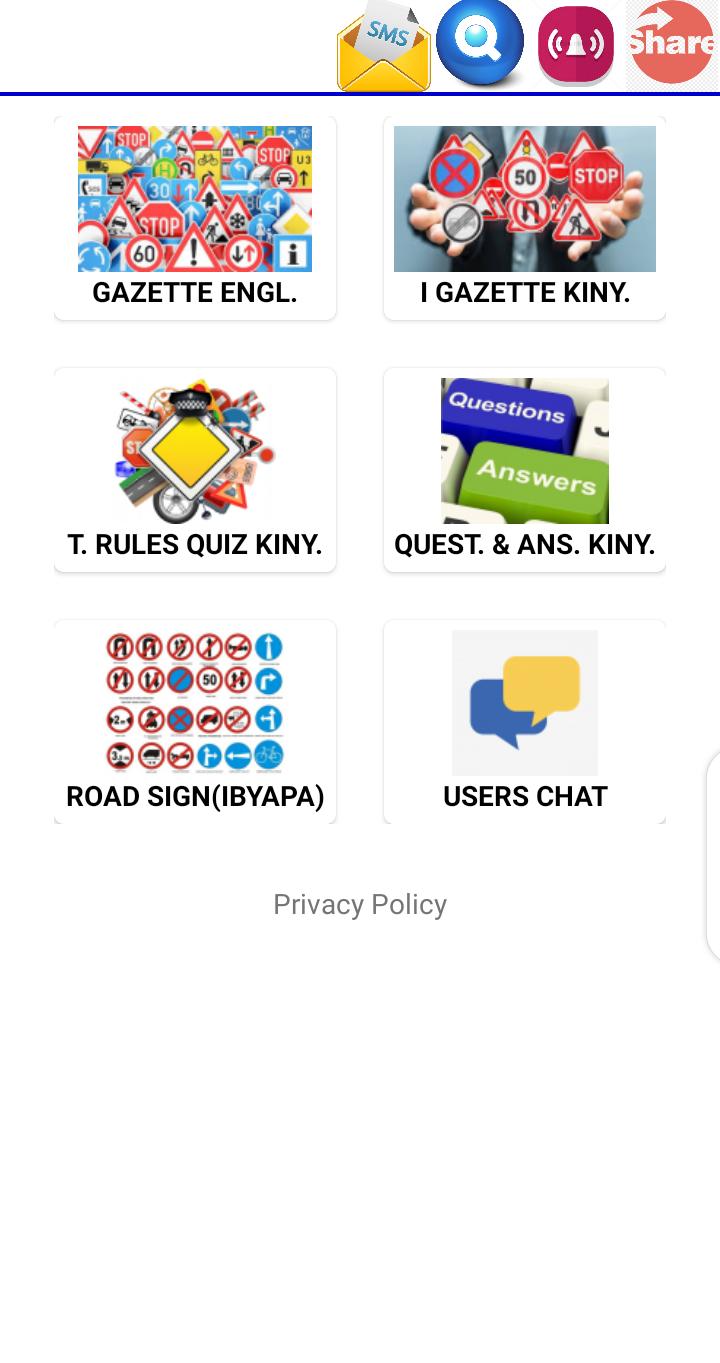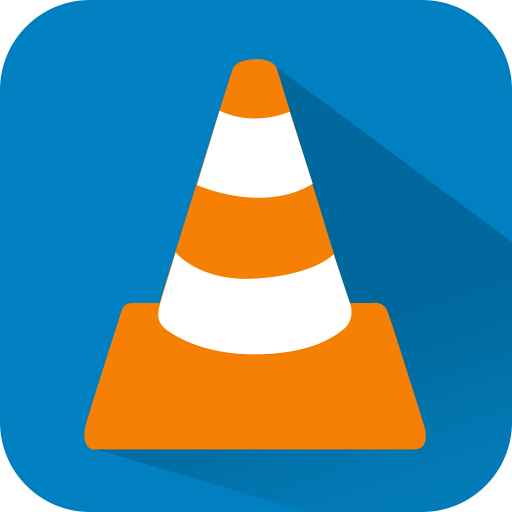Rules of the road and driving etiquette are the general practices and procedures
Rules of the road and driving etiquette are the general practices and procedures that road users are required to follow. These rules usually apply to all road users, though they are of special importance to motorists and cyclists. These rules govern interactions between vehicles and with pedestrians.
What's New in the Latest Version 12.0
Last updated on Jul 11, 2024
We make change to our App settings and contents
Traffic Rules (Amategeko y'umuhanda) is a critical set of regulations designed to ensure the safe and efficient movement of vehicles and pedestrians on public roads. These rules, varying slightly from country to country, establish a common language for road users, minimizing confusion and promoting order. A thorough understanding and consistent adherence to these rules are paramount for preventing accidents, protecting lives, and maintaining a smooth flow of traffic.One fundamental aspect of traffic rules is the concept of right-of-way. This principle dictates which vehicle or pedestrian has priority in various traffic situations, such as intersections, roundabouts, and pedestrian crossings. Understanding right-of-way is essential for avoiding collisions, as it clarifies who has the legal right to proceed first. Typically, vehicles approaching an intersection from the right have the right-of-way, unless otherwise indicated by traffic signals or signs. Pedestrians generally have the right-of-way at designated crosswalks.
Traffic signals, including traffic lights and stop signs, play a crucial role in regulating traffic flow. Traffic lights use a standardized color code: red for stop, yellow for caution, and green for go. Stop signs require all vehicles to come to a complete stop before proceeding. Understanding and obeying these signals is fundamental to safe driving. Ignoring traffic signals is a major cause of accidents and can lead to severe consequences.
Speed limits are another vital component of traffic rules. These limits, typically posted on roadside signs, dictate the maximum permissible speed for vehicles in specific areas. Speed limits are set based on factors such as road conditions, traffic density, and the presence of pedestrians. Adhering to speed limits is crucial for maintaining control of the vehicle and reducing the severity of potential accidents. Excessive speed reduces reaction time and increases the stopping distance, significantly increasing the risk of collisions.
Traffic signs provide essential information to drivers and pedestrians. These signs use symbols and text to convey instructions, warnings, and information about road conditions. Understanding the meaning of different traffic signs is crucial for navigating roads safely. Common traffic signs include warning signs, regulatory signs, and informational signs. Warning signs alert drivers to potential hazards, such as sharp curves or pedestrian crossings. Regulatory signs indicate specific rules, such as speed limits or no-passing zones. Informational signs provide guidance and directions.
Driving under the influence of alcohol or drugs is strictly prohibited by traffic rules. These substances impair judgment, reaction time, and coordination, making it extremely dangerous to operate a vehicle. Driving under the influence puts not only the driver but also other road users at risk. Penalties for driving under the influence are severe and can include fines, license suspension, and even imprisonment.
The use of seat belts is another crucial aspect of traffic rules. Seat belts are designed to restrain occupants in the event of a collision, reducing the risk of serious injury or death. Wearing a seat belt is mandatory in most countries and is a proven life-saving measure. Studies have consistently shown that wearing a seat belt significantly reduces the risk of fatalities in car accidents.
Traffic rules also address the use of mobile phones while driving. Using a mobile phone while driving can be extremely distracting and significantly increases the risk of accidents. Many jurisdictions have implemented laws prohibiting the use of handheld mobile phones while driving. Hands-free devices can be used in some cases, but even these can be distracting and should be used with caution.
Overtaking other vehicles is a maneuver that requires careful consideration and adherence to traffic rules. Overtaking should only be performed when it is safe and legal to do so. Drivers must ensure that they have clear visibility and sufficient space to complete the maneuver without endangering themselves or other road users. Improper overtaking can lead to head-on collisions, one of the most dangerous types of accidents.
Pedestrians also have responsibilities under traffic rules. Pedestrians should always use designated crosswalks when crossing the street and should look both ways before crossing. Jaywalking, or crossing the street outside of a designated crosswalk, is dangerous and illegal. Pedestrians should also be aware of their surroundings and avoid distractions, such as using mobile phones, while walking near traffic.
Cycling on public roads is subject to specific traffic rules. Cyclists are required to obey the same traffic signals and signs as motorists. They should also ride in a predictable manner and use hand signals to indicate their intentions. Wearing a helmet is highly recommended for cyclists to protect themselves in the event of a fall or collision.
These are just some of the key aspects of traffic rules. A comprehensive understanding and consistent application of these rules are essential for ensuring the safety and efficiency of our roads. By following these rules, we can all contribute to creating a safer and more pleasant driving environment for everyone.
Rules of the road and driving etiquette are the general practices and procedures
Rules of the road and driving etiquette are the general practices and procedures that road users are required to follow. These rules usually apply to all road users, though they are of special importance to motorists and cyclists. These rules govern interactions between vehicles and with pedestrians.
What's New in the Latest Version 12.0
Last updated on Jul 11, 2024
We make change to our App settings and contents
Traffic Rules (Amategeko y'umuhanda) is a critical set of regulations designed to ensure the safe and efficient movement of vehicles and pedestrians on public roads. These rules, varying slightly from country to country, establish a common language for road users, minimizing confusion and promoting order. A thorough understanding and consistent adherence to these rules are paramount for preventing accidents, protecting lives, and maintaining a smooth flow of traffic.One fundamental aspect of traffic rules is the concept of right-of-way. This principle dictates which vehicle or pedestrian has priority in various traffic situations, such as intersections, roundabouts, and pedestrian crossings. Understanding right-of-way is essential for avoiding collisions, as it clarifies who has the legal right to proceed first. Typically, vehicles approaching an intersection from the right have the right-of-way, unless otherwise indicated by traffic signals or signs. Pedestrians generally have the right-of-way at designated crosswalks.
Traffic signals, including traffic lights and stop signs, play a crucial role in regulating traffic flow. Traffic lights use a standardized color code: red for stop, yellow for caution, and green for go. Stop signs require all vehicles to come to a complete stop before proceeding. Understanding and obeying these signals is fundamental to safe driving. Ignoring traffic signals is a major cause of accidents and can lead to severe consequences.
Speed limits are another vital component of traffic rules. These limits, typically posted on roadside signs, dictate the maximum permissible speed for vehicles in specific areas. Speed limits are set based on factors such as road conditions, traffic density, and the presence of pedestrians. Adhering to speed limits is crucial for maintaining control of the vehicle and reducing the severity of potential accidents. Excessive speed reduces reaction time and increases the stopping distance, significantly increasing the risk of collisions.
Traffic signs provide essential information to drivers and pedestrians. These signs use symbols and text to convey instructions, warnings, and information about road conditions. Understanding the meaning of different traffic signs is crucial for navigating roads safely. Common traffic signs include warning signs, regulatory signs, and informational signs. Warning signs alert drivers to potential hazards, such as sharp curves or pedestrian crossings. Regulatory signs indicate specific rules, such as speed limits or no-passing zones. Informational signs provide guidance and directions.
Driving under the influence of alcohol or drugs is strictly prohibited by traffic rules. These substances impair judgment, reaction time, and coordination, making it extremely dangerous to operate a vehicle. Driving under the influence puts not only the driver but also other road users at risk. Penalties for driving under the influence are severe and can include fines, license suspension, and even imprisonment.
The use of seat belts is another crucial aspect of traffic rules. Seat belts are designed to restrain occupants in the event of a collision, reducing the risk of serious injury or death. Wearing a seat belt is mandatory in most countries and is a proven life-saving measure. Studies have consistently shown that wearing a seat belt significantly reduces the risk of fatalities in car accidents.
Traffic rules also address the use of mobile phones while driving. Using a mobile phone while driving can be extremely distracting and significantly increases the risk of accidents. Many jurisdictions have implemented laws prohibiting the use of handheld mobile phones while driving. Hands-free devices can be used in some cases, but even these can be distracting and should be used with caution.
Overtaking other vehicles is a maneuver that requires careful consideration and adherence to traffic rules. Overtaking should only be performed when it is safe and legal to do so. Drivers must ensure that they have clear visibility and sufficient space to complete the maneuver without endangering themselves or other road users. Improper overtaking can lead to head-on collisions, one of the most dangerous types of accidents.
Pedestrians also have responsibilities under traffic rules. Pedestrians should always use designated crosswalks when crossing the street and should look both ways before crossing. Jaywalking, or crossing the street outside of a designated crosswalk, is dangerous and illegal. Pedestrians should also be aware of their surroundings and avoid distractions, such as using mobile phones, while walking near traffic.
Cycling on public roads is subject to specific traffic rules. Cyclists are required to obey the same traffic signals and signs as motorists. They should also ride in a predictable manner and use hand signals to indicate their intentions. Wearing a helmet is highly recommended for cyclists to protect themselves in the event of a fall or collision.
These are just some of the key aspects of traffic rules. A comprehensive understanding and consistent application of these rules are essential for ensuring the safety and efficiency of our roads. By following these rules, we can all contribute to creating a safer and more pleasant driving environment for everyone.















